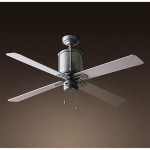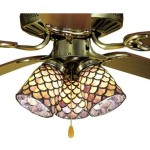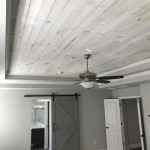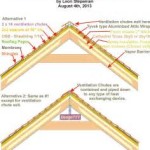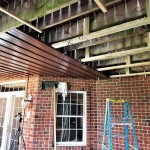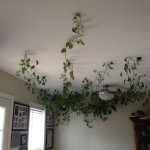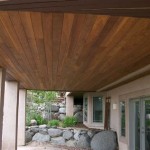What Kind of Beadboard Do You Use For Ceilings?
Beadboard is a versatile and aesthetically pleasing material that has been used for centuries to enhance interior spaces. Its characteristic vertical grooves and beaded edge create a classic, textured look, making it a popular choice for walls, wainscoting, and, increasingly, ceilings. Selecting the appropriate type of beadboard for a ceiling installation is crucial for achieving the desired aesthetic, ensuring structural integrity, and considering long-term maintenance.
Choosing the right beadboard for a ceiling depends on several factors, including the room's moisture levels, the desired aesthetic, the budget, and the ease of installation. This article will explore the different types of beadboard available and their suitability for ceiling applications, providing a comprehensive guide for homeowners and contractors alike.
Understanding the Material Options: Wood, MDF, and PVC
Beadboard is typically available in three primary materials: wood, Medium Density Fiberboard (MDF), and Polyvinyl Chloride (PVC). Each material possesses unique characteristics that influence its performance and suitability for ceiling applications. A thorough understanding of these material properties is essential for making an informed decision.
Wood Beadboard: Traditionally, beadboard was crafted exclusively from wood. Common wood types included pine, poplar, and cedar. The natural beauty of wood, with its distinct grain patterns and warm tones, is a significant advantage. Wood beadboard offers a timeless appeal and can be stained or painted to match any décor. However, wood is susceptible to moisture damage, making it less suitable for bathrooms or kitchens with poor ventilation. Expansion and contraction due to temperature and humidity fluctuations can also lead to warping or cracking over time. Proper sealing and maintenance are crucial for preserving wood beadboard in ceiling applications.
MDF Beadboard: Medium Density Fiberboard (MDF) is an engineered wood product made from wood fibers combined with resin and subjected to high pressure and temperature. MDF beadboard offers a smooth, consistent surface that is ideal for painting. It is generally more affordable than solid wood and less prone to warping. However, MDF is also susceptible to moisture damage and should not be used in areas with high humidity unless properly sealed and primed. The edges of MDF beadboard are particularly vulnerable to moisture absorption, requiring careful attention during installation and finishing.
PVC Beadboard: Polyvinyl Chloride (PVC) beadboard is a synthetic material that is completely waterproof and resistant to moisture damage, making it an excellent choice for bathrooms, kitchens, and other high-humidity environments. PVC beadboard is also lightweight and easy to install. It is available in a variety of colors and textures, including options that mimic the look of painted wood. While PVC beadboard offers superior moisture resistance, it may not have the same aesthetic appeal as natural wood for some homeowners. It can also be more expensive than MDF, but the long-term durability and low maintenance requirements often justify the higher initial cost. PVC beadboard is also resistant to insect damage, a benefit not offered by wood or MDF.
Factors to Consider When Choosing Beadboard for Ceilings
Selecting the right beadboard for a ceiling involves carefully considering several factors to ensure a successful and long-lasting installation. These factors include the room's function and environment, the desired aesthetic, the installation process, and the budget.
Room Function and Environment: The primary consideration is the room's function and the surrounding environmental conditions. Bathrooms and kitchens are subject to high humidity levels, requiring a moisture-resistant material like PVC. Living rooms, bedrooms, and hallways, which typically have lower humidity levels, may be suitable for wood or MDF beadboard, provided adequate ventilation is present. Coastal environments with high salt content in the air can also accelerate the degradation of wood and MDF, making PVC a more durable option. Consider the presence of recessed lighting or other fixtures in the ceiling, as these may generate heat that can affect the beadboard material over time.
Aesthetic Considerations: The desired aesthetic is another crucial factor. Wood beadboard offers a natural, warm look that is difficult to replicate with synthetic materials. If the goal is to achieve a classic, traditional aesthetic, wood may be the preferred choice. MDF beadboard, with its smooth surface, is ideal for achieving a perfectly painted finish. PVC beadboard offers a variety of colors and textures but may lack the natural charm of wood. Consider the existing décor and architectural style of the room when selecting the beadboard material. Match the beadboard style to the overall design theme for a cohesive and visually appealing result.
Installation Process: The ease of installation is an important consideration, particularly for DIY projects. PVC beadboard is typically lighter and easier to cut and install than wood or MDF. Wood beadboard requires more specialized tools and skills for cutting and fastening. MDF beadboard can be heavy and prone to chipping if not handled carefully. Consider the size and complexity of the ceiling area when planning the installation. Larger areas may require more intricate cutting and fitting, making PVC a more manageable option for some installers. Proper fastening techniques are essential for all beadboard materials to ensure a secure and long-lasting installation. Using appropriate adhesive and fasteners, such as finishing nails or screws, is crucial for preventing sagging or movement over time.
Budget: The budget is always a significant factor in any home improvement project. Wood beadboard is generally the most expensive option, followed by PVC and then MDF. However, the long-term costs of maintenance and replacement should also be considered. While MDF may have a lower initial cost, it may require more frequent painting or replacement due to moisture damage. PVC beadboard, with its low maintenance requirements and long lifespan, may be a more cost-effective option in the long run. Obtain quotes from multiple suppliers and contractors to compare prices and ensure that the chosen material fits within the allocated budget.
Beadboard Dimensions: Beadboard panels come in various widths and lengths. Traditional beadboard often features narrow planks, while modern options include wider panels for faster installation. The appropriate size depends on the overall scale of the room and the desired aesthetic. Wider panels can create a more contemporary look, while narrower planks evoke a more traditional feel. Consider the number of seams that will be visible in the finished ceiling. Fewer seams may be desirable for a cleaner, more streamlined look. Larger panels can minimize the number of seams, but they may also be more difficult to handle and install.
Installation Techniques and Best Practices
Proper installation is critical for ensuring the longevity and aesthetic appeal of a beadboard ceiling. Regardless of the material chosen, careful preparation, accurate cutting, and secure fastening are essential for a successful installation.
Surface Preparation: Before installing beadboard, the ceiling surface must be clean, dry, and level. Remove any existing wallpaper, paint, or debris. Repair any cracks or imperfections in the ceiling surface. If the ceiling is uneven, shimming may be necessary to create a level surface for the beadboard. Prime the ceiling with a suitable primer to improve adhesion and prevent moisture penetration. For wood and MDF beadboard, apply a stain-blocking primer to prevent tannins from bleeding through the finish coat.
Cutting and Fitting: Accurate cutting is essential for achieving a professional-looking finish. Use a sharp saw, such as a miter saw or circular saw, to cut the beadboard panels to the desired size. For complex cuts, such as around light fixtures or ceiling fans, use a jigsaw. Measure carefully and double-check all dimensions before cutting. Always cut slightly larger than needed and then fine-tune the fit with a block plane or sandpaper. When installing beadboard around corners, miter the edges for a clean, professional look.
Fastening Techniques: Securely fastening the beadboard to the ceiling is crucial for preventing sagging or movement over time. Use a combination of adhesive and fasteners for maximum security. Apply construction adhesive to the back of the beadboard panels and then press them firmly against the ceiling. Use finishing nails or screws to fasten the beadboard to the ceiling joists or furring strips. Space the fasteners evenly along the length of the panels, typically every 6-8 inches. Countersink the fasteners slightly and then fill the holes with wood filler or caulk. For PVC beadboard, use stainless steel fasteners to prevent corrosion. Use appropriate safety gear, including eye protection and a dust mask, when cutting and installing beadboard.
Finishing Touches: After the beadboard is installed, apply the desired finish. For wood beadboard, stain or paint the panels to match the existing décor. For MDF beadboard, prime the panels and then apply two coats of paint. For PVC beadboard, no finishing is typically required, unless a specific color or texture is desired. Caulk all seams and gaps to create a seamless and professional-looking finish. Install crown molding or other decorative trim to add a finishing touch and conceal any imperfections. Ensure adequate ventilation in the room to prevent moisture buildup and extend the life of the beadboard ceiling. Regularly inspect the ceiling for any signs of damage or wear and make any necessary repairs promptly. Cleaning beadboard ceilings typically involves wiping them down with a damp cloth and a mild detergent. Avoid using abrasive cleaners or harsh chemicals, as these can damage the finish.

Diy Beadboard Ceiling Tutorial Easy And Inexpensive Custom Treatment

Diy Beadboard Ceiling Tutorial Easy And Inexpensive Custom Treatment

How To Install Beadboard Panels On A Ceiling And Why We Ll Never Do It Again The Lake Land

How To Install Beadboard Panels On A Ceiling And Why We Ll Never Do It Again The Lake Land

Beadboard Ceiling What It Is And How To Install Yourself

Beadboard Ceiling Panels Ceilings Armstrong Residential

How To Install Beadboard Panels On A Ceiling And Why We Ll Never Do It Again The Lake Land

Beadboard Ceiling Panels Ceilings Armstrong Residential

Beadboard Ceilings 101 All You Need To Know Bob Vila

Installing Bead Board Ceiling Sand And Sisal
Related Posts

